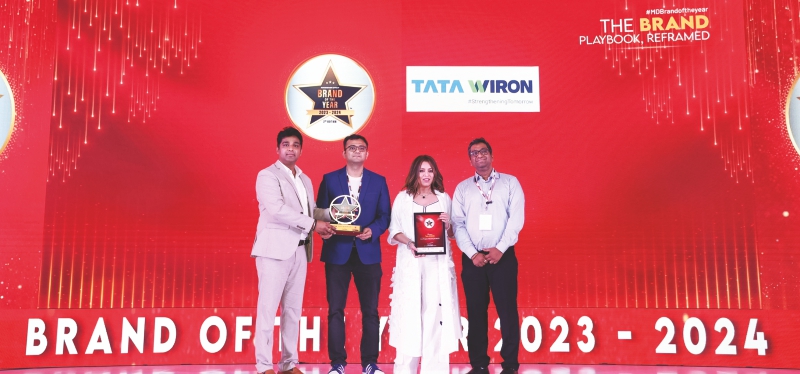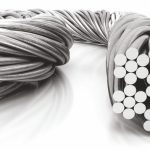Global Wires India (GWI), a division of Tata Steel Limited, is a preferred supplier of steel wires across diverse industry segments ranging from construction, automotive and power to general engineering and retail. The company, with a combined annual manufacturing capacity of 670,000 MT, manufactures a wide range of value added product offerings like motor tyre bead (MTB), low relaxation pre-stressed concrete (LRPC), induction hardened and tempered (IHT), knotted fence, and 3D weld mesh. GWI’s future plan is to double its capacity to 1 million tons by 2030. In a recent conversation with Wire & Cable India, Mr. Anurag Pandey, Executive-in-Charge, Global Wires India-Tata Steel shared about the company’s journey, specialized products and their USP, along with his thoughts on the current scene of the steel wire industry and how the company is working to overcome the challenges.
Wire & Cable India: Could you please take us through the business journey, milestones, and achievements of your company?
Anurag Pandey: Global Wires India’s (GWI) strong presence for 7 decades has helped grow and achieve many milestones. From being incorporated in 1958 as Special Steels Private Limited to becoming a subsidiary of Tata Steel in 1979 and subsequently, to becoming a division of Tata Steel in 2002, GWI has come a long way. GWI is planning to double its capacity to 1 million tons by 2030 by ensuring that changing expectations and requirements of customers are being met.
Keeping pace with the mega trends that are shifting the global world through urbanization, changing economic power, and technology, Tata Wiron is set to take full advantage of the boosted infrastructure, automotive, and energy sectors. Our product offerings have all set industry benchmarks in terms of quality and to deliver application support expertise.
Growing in volumes in value added product offerings like Motor Tyre Bead (MTB), Low Relaxation Pre-Stressed Concrete (LRPC), Induction Hardened and Tempered (IHT), knotted fence, and 3D weld mesh, GWI seeks to successfully leave its mark. We have been touching lives of millions of customers every day and we take pride in saying that one in every 3 tyres in India runs on the tyre bead made by GWI, 2 out of every 3 flyovers in India stand tall on our LRPC strands, 1 in every 2 eggs In India are laid in a cage made from Tata Wiron, and 1 out of every 2 two-wheelers manufactured in India uses Tata Steel suspension wire. Tata Wiron is poised to grow through entry in the higher technology arena while also focussing on scaling up downstream play.
Watch: RR Kabel | Solar Cables | Solar Plant | Renewable Energy
WCI: Brief us about your specialized products along with their USPs.
AP: In the auto segment, Tata Wiron has helped the import substitution for spring manufacturers by bringing indigenous IHT (Induction Hardened Tempered) wire which otherwise was imported. We enjoy a healthy 80% market share in IHT 2W/3W suspension segment, enabling 90% localization of the category. In the fencing segment, we have added two new products offering – knotted fence and 3D weld mesh, which have proved to be a game changer in the fencing segment. Knotted fence is a uniquely designed and technically superior fencing solution, designed to offer maximum protection through a unique cross lock knot, which has improved the overall strength of the fence by 3 times more than a conventional fence. Owing to variable spacing, the product is 25% cheaper than the chain link solution. Through 3D weld mesh, we have offered aesthetically superior and robust one stop fencing solution which is 25% cheaper than traditional brick wall. Superior quality, high durability, easy installation, and complete impenetrability offered by this solution provides convenience and peace of mind to consumers. At Tata Wiron, we work tirelessly to serve our purpose to attain excellence through purposeful innovations and responsiveness while enabling improvement in quality of life.
WCI: Please share your views on the Indian vis a vis the global steel wire industry. What is the role of the Indian government in the growth of this sector?
AP: The global steel wire industry is expected to grow at a CAGR of 5-6% by 2030 with the Asia Pacific region accounting for over 40% of consumption as well as production of steel wires. The main drivers of this growth would be improved construction activities in India and China, as well as the replacement market in developed markets such as Europe and US.
The global steel wire industry is highly fragmented with the top 5 producers accounting for only 32% of global production. This trend is expected to continue with more new entrants coming from both developed and emerging markets. The Indian steel wire industry has come a long way since its establishment in the 1920s. If we look at the wire demand, nearly 88% of wires are in carbon steel grades against the global average of 56%. Low per capita steel consumption in India against the world average and various government schemes will drive the steel wire growth in India. For example, the government has approved the Production Linked Incentive (PLI) Scheme for Speciality Steel, with budgetary outlay of USD 6.32 billion over five years. Current PLI Scheme covers 5 categories of steel wire and with phase 2 of PLI in motion further scope of products are expected to be widened. The Indian government has also launched various schemes to support greener products and processes which have helped the steel as well as steel wire industry players to move towards net zero carbon emissions by 2045-2050.
Also Read: Viraj Profiles Aiming USD 3 Billion Turnover in Next 4 Years
WCI: What are the major ongoing challenges in the Indian steel wire industry?
AP: Like any other industry, the steel wire industry is also affected by cost and availability of raw material, technological advancements, price fluctuations, government policies and regulations, competition from imports and other supply and demand side factors. Needless to say, the companies have to continuously invest and adopt advanced technologies to remain competitive in the domestic as well as global market. Indian steel wire manufacturers face strong competition from imported products, particularly from China, which puts pressure on local manufacturers to improve their cost competitiveness. Fluctuations in global demand for steel wire products and price volatility impacts the profitability. The industry and the government need to monitor and adapt to changing market dynamics to maintain steady growth. Responsible supply chain should be a major focus given the industry is growing steadily and the companies have to adapt necessary changes in their processes to adhere to environmental obligations.

WCI: How can these challenges of the industry be addressed? How is your company contributing towards this transition?
AP: The upstream value chain needs to grow in tandem with the increasing steel wire demand. Along these lines, Tata Steel long products are expected to grow to 13 million tons by 2030 a/a the current level of 5 million tons. Moving towards technologically advanced and value-added products is necessary to stay away from commoditization and be ahead of the market. To address this, we have introduced IHT (Induction Hardened Tempered) wire, Aayush coating, knotted fence, 3D weld mesh, etc. As a player, one needs to diversify their product offering or the target market to remain immune to cyclicity in the business. We are constantly reviewing our product offerings and target market to adapt to the changing market dynamics. We at Tata Wiron, believe in growing responsibly and we are focusing consistently in adapting greener processes and products to achieve zero liquid discharge and reduction of carbon emissions.





